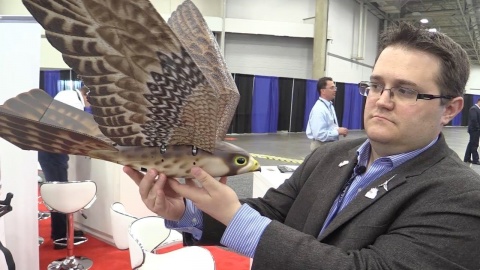-
Team TechTree
09:02 06th Mar, 2020
Watch Out! Now Drones Can Navigate Like Bats | TechTree.com
Watch Out! Now Drones Can Navigate Like Bats
Researchers have developed a system that allows drones to use echo systems to navigate their way

There was a sequence in last year’s Bollywood blockbuster Uri: The Surgical Strike where a scientist creates a drone (called Garud) that resembles a falcon and directs our army unit deep into enemy territory. Sounded like science fiction then but the fact is that such a drone does exist – though in faraway Dallas!
The developers of Garud (that’s not its real name though) had a clear purpose behind the flapping drone was to curtail bird hits on drones (watch the video) though now researchers have taken the experiment further by equipping them with the ability to use echoes to navigate these flying robots.

So, from drones that resemble falcons, the world may soon witness drones that not only look like bats but also behave like them when it comes to navigating their way around. Bats can find their way in the dark using echo-location and that’s precisely what these drones would do using four microphones and a speaker.
The latest experiment took place at Purdue University conducted by associate professor Mireille Boutin of Purdue and professor Gregor Kemper of Munich who worked to reconstruct the wall configuration of rooms by using echoes picked up by microphones on the drone, just the same way that bats use echolocation to orient themselves with their surroundings.
The system relies on the concept of measuring distance by generating echoes and uses an algorithm based on communicative algebra sorts echoes to determine which distance represents which object. The drone needs to be motionless to get a feel of the surroundings but the team believes that the technology can be used mid-flight as well.
When a microphone hears an echo, the time difference between the moment the sound was produced and the time it was heard is recorded. That time difference shows the distance travelled by the sound after bouncing on a wall, says a post appearing on Purdue University website.

In case you happen to be Viru Sahasrabuddhe type and want to know to what practical use this invention can be put, the professors have this to say: “Such a device could be carried by a person, affixed to a car, or even used underwater. Having more signal input would prevent solely relying on one type of input, like car backup cameras, and improve the chances that objects could be detected more accurately and in a wider variety of conditions.”
TAGS: drones, Research, purdue university, bat drones, uri: the surgical strike
- DRIFE Begins Operations in Namma Bengaluru
- Sevenaire launches ‘NEPTUNE’ – 24W Portable Speaker with RGB LED Lights
- Inbase launches ‘Urban Q1 Pro’ TWS Earbuds with Smart Touch control in India
- Airtel announces Rs 6000 cashback on purchase of smartphones from leading brands
- 78% of Indians are saving to spend during the festive season and 72% will splurge on gadgets & electronics
- 5 Tips For Buying A TV This Festive Season
- Facebook launches its largest creator education program in India
- 5 educational tech toys for young and aspiring engineers
- Mid-range smartphones emerge as customer favourites this festive season, reveals Amazon survey
- COLORFUL Launches Onebot M24A1 AIO PC for Professionals







TECHTREE